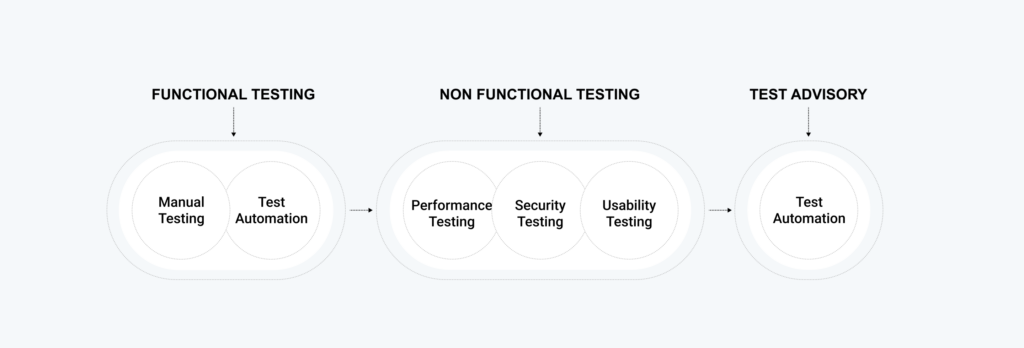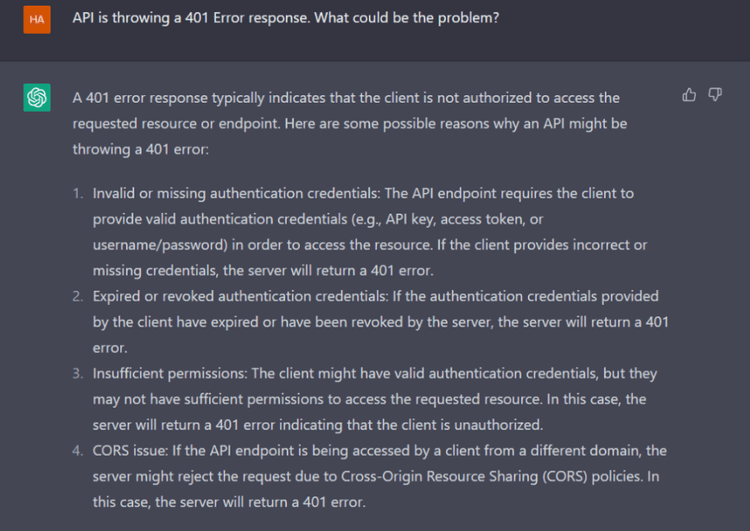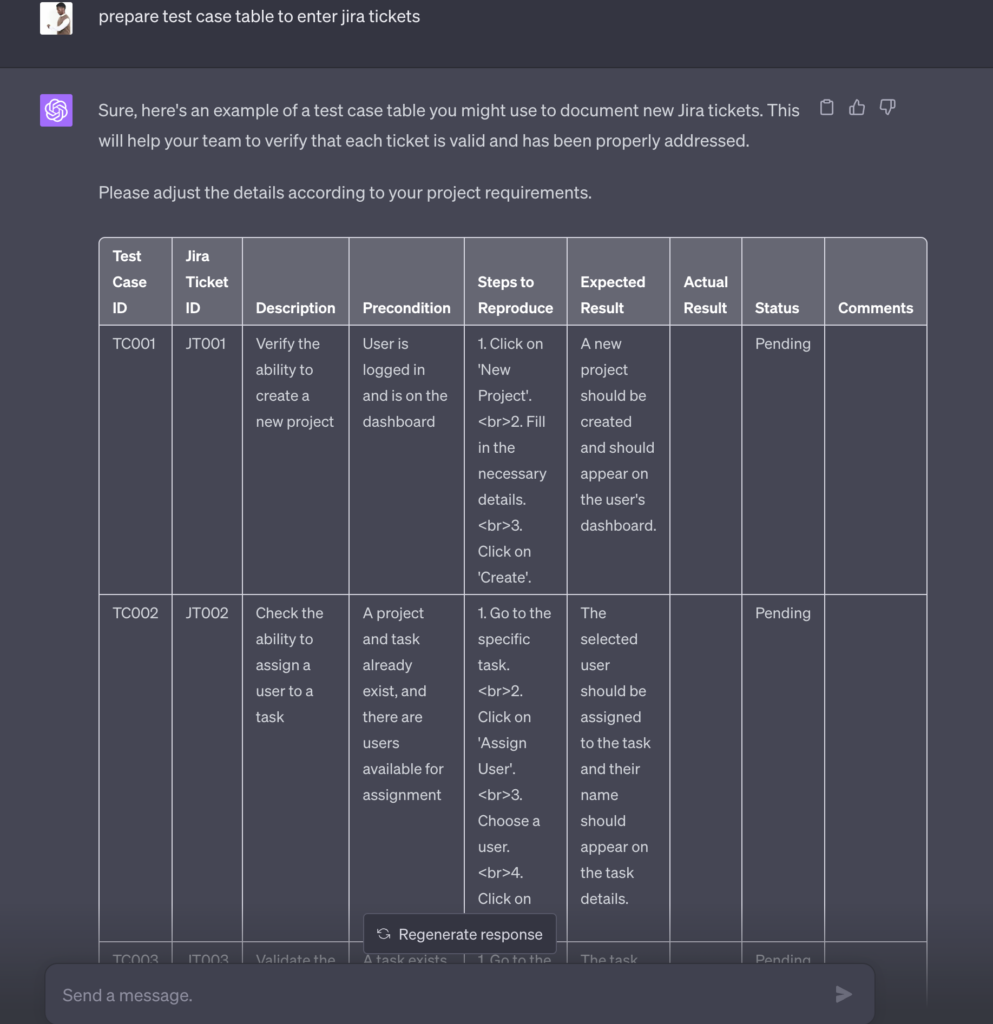
The question thus arises: does artificial intelligence extend its capabilities to encompass software testing and test automation as well? For starters, it is essential to lay down a solid foundation of the concept of software testing before we delve into its potential intersection with artificial intelligence.
Software testing entails using manual procedures or automated tools to verify if software, a product, or its components meet the expected requirements and operate as intended. While software testing encompasses a diverse array of types, the two most prevalent ones are manual and automated testing. However, for the purpose of our discussion today, we will focus on automated software testing.
Within the Software Development Life Cycle, test automation or automated testing implies conducting tests, controlling test data, and using the derived results to boost software quality, all while decreasing human involvement. This methodology substantially fortifies the quality assurance process. Nonetheless, it’s worth mentioning that a comprehensive and robust quality assurance procedure requires the concerted oversight of the production team, regardless of the robustness of automated testing.
ChatGPT, a product of OpenAI’s ingenuity, is an advanced conversational artificial intelligence model that utilizes the architecture of the Generative Pre-Trained Transformer (GPT). Rooted in the realm of natural language processing (NLP), it employs sophisticated deep learning techniques to decipher and comprehend the intricacies of natural language.
To truly appreciate its potential role in software testing, it’s essential to delve into its applications, merits, constraints, and prospective influence within this domain. This exploration will provide a comprehensive understanding of how this cutting-edge AI model could revolutionize the landscape of software testing. So, without further ado, let’s dive deep into this fascinating topic.

Here are some benefits of using ChatGPT for software testing and test automation
It has enabled testers and developers to create test cases and test data without manual intervention.
ChatGPT leverages its natural language processing capabilities so that testers and developers can generate test cases and data using natural, easy-to-understand language commands.
The test cases and data are tailored to your specific needs since ChatGPT understands the requirements of the software it’s testing. This has helped reduce the time and effort required to create cases manually and ensure they cover all necessary scenarios.
Additionally, ChatGPT generates easy-to-understand test scripts to automate the testing process. The clear instructions and step-by-step guides from the artificial intelligence testing tutorial ensures that the testing process is streamlined and efficient and that the scripts remain accurate and effective.
With ChatGPT, you can automate test cases using natural language commands to reduce the risk of errors compared to manual cases. This is because natural language commands are easier to understand and interpret than complex programming code and are less prone to errors.
Also, ChatGPT automatically executes test cases based on natural language commands, which saves time and effort that would otherwise be required for manual execution. This automation process also ensures that test cases are executed consistently and accurately, with minimal errors or oversights.
Since ChatGPT generates clear reports based on the results of the automated test cases, testers, and developers quickly identify any bugs in the software and take corrective action.
By analyzing results with natural language processing, ChatGPT detects patterns and trends that may reveal fundamental issues in an application. For example, if a specific feature consistently fails, ChatGPT analyzes the data and identifies potential causes of the problem, like a bug in the code or a problem with the foundational framework.
ChatGPT’s machine learning capabilities can learn from past results and identify patterns that indicate potential issues or defects after a thorough result analysis. This allows ChatGPT to become increasingly accurate and effective at identifying potential problems over time.

ChatGPT can be a valuable tool for software testing, particularly in natural language processing (NLP). Testers can interact with ChatGPT to evaluate its responses and identify areas for improvement.
Did you know testers can use ChatGPT to generate automated test cases based on specific requirements? They also interact with ChatGPT to refine cases and ensure all possible scenarios are covered. Then, ChatGPT analyzes the results and generates reports that are easy to understand, highlighting any issues that require further attention.
ChatGPT also identifies gaps in test coverage by analyzing the natural language used in requirements and identifying areas where you may need additional testing. This information will then be used to adjust the testing strategy to ensure all possible cases are covered.
Moreover, this artificial intelligence (AI) in software testing can assist in data generation to ensure that the data is accurate and relevant. So, by interacting with ChatGPT and evaluating its responses, testers identify areas where the NLP model requires improvement. This feedback informs the model modification to improve its accuracy and effectiveness over time.
Generate realistic test data for software products that require a vast amount of data for performance testing.
ChatGPT’s natural language processing abilities benefit software products that require a large amount of data, including addresses, names, contact information, for performance testing. It employs natural language requirements to create test data that simulate user behaviors. This ensures that the performance testing covers all possible scenarios.
The generated data mimics real-world scenarios and covers all possible cases, including those that might cause the system to malfunction or break down, which will be challenging to create manually.
Also, the generated data may be customized to include specific data types, ranges, and formats to ensure it is accurate and relevant to the software product’s requirements.
For example, if you want to format the test plan to input data and track bug like Jira or Github, you may leverage ChatGPT by prompting further in the same message thread for this scenario:
Prompt: “Prepare a test case table to enter into Jira tickets.”
ChatGPT:

Suppose a software product requires multiple test cases to cover different features, functionalities, inputs, outputs, and error handling. In that case, Chat GPT will create these relevant cases by understanding the natural language requirements.
The generated test cases cover the edge cases and error scenarios that are hard to create manually, so the system is thoroughly tested, and every case is covered.
The testers also interact with Chat GPT to analyze its responses and identify the areas that require improvement. This enhances the system’s accuracy and relevance in generating cases that meet all requirements over time.

